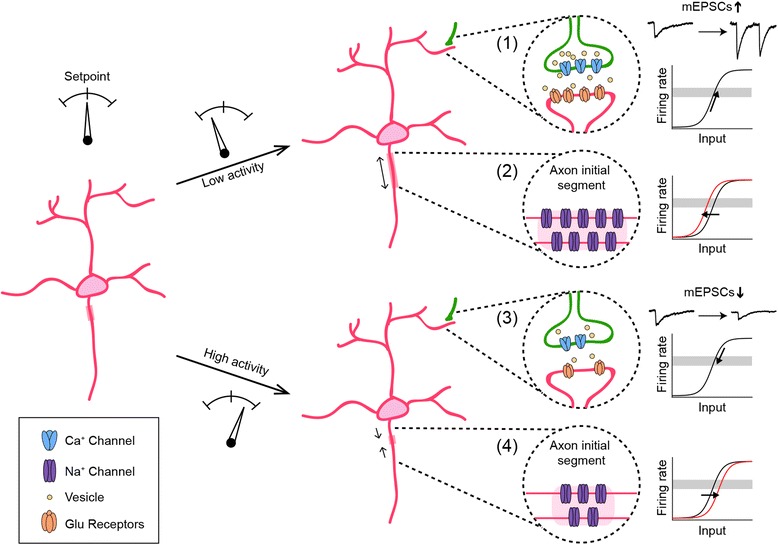Fig. 1.

Diverse homeostatic plasticity mechanisms stabilize the activity of developing neurons. When the activity of individual neurons decreases below (1 and 2) or increases above (3 and 4) a setpoint, homeostatic regulation of synaptic strength (1 and 3) and/or intrinsic excitability (2 and 4) acts to restore normal activity. By increasing (1) or decreasing (3) synaptic input (e.g., changes in mEPSC amplitude or frequency), a neuron’s output firing rate can be shifted up or down to the target activity (grey area). By increasing (2) or decreasing (4) intrinsic excitability (e.g., changes in the length and location of AIS), a neuron’s input/output relationship can be modified
